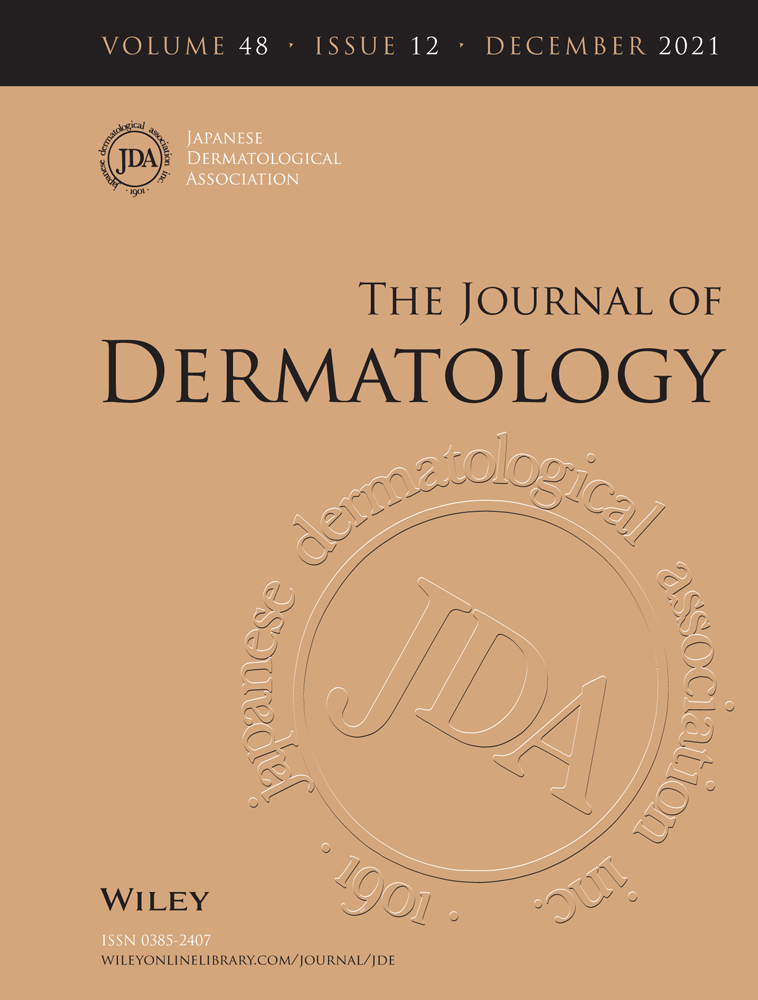Only plantar lesion of punctate palmoplantar keratoderma with a novel missense mutation in the AAGAB gene: Two Japanese familial case reports and review of reported mutations
Abstract
Punctate palmoplantar keratoderma type 1 (PPPK1) is a rare autosomal dominant disorder characterized by hyperkeratotic papules on the palms and soles. In 2012, heterozygous loss-of-function mutations in the AAGAB gene were identified as the cause of this disorder. To date, 51 AAGAB mutations have been reported in families with PPPK1, but clear genotype–phenotype correlations have not been established yet. In this report, we identified four Japanese patients with PPPK1 from two families with an identical novel heterozygous AAGAB mutation. All patients showed hyperkeratotic papules only on the soles. Direct sequencing analysis of the AAGAB gene using peripheral blood-derived genomic DNA samples revealed that all of the patients carried a heterozygous 1-bp substitution (c.844G>A, p.Glu282Lys) in exon 9, leading to a missense change. Since all patients with the same missense mutation showed a mild phenotype limited to the soles, there is thought to be a genotype–phenotype correlation regarding this mutation. The c.844G>A mutation is a known single-nucleotide polymorphism with a minor allele frequency of 0.000012. Because of its mild symptoms, individuals with this mutation can be misdiagnosed with clavus or verruca vulgaris; this suggests that there may be a high incidence of mild symptoms of skin lesions found only on the soles in patients with PPPK1. Therefore, it is necessary to consider this disease when keratotic papules are found on the soles.
CONFLICT OF INTEREST
None declared.




